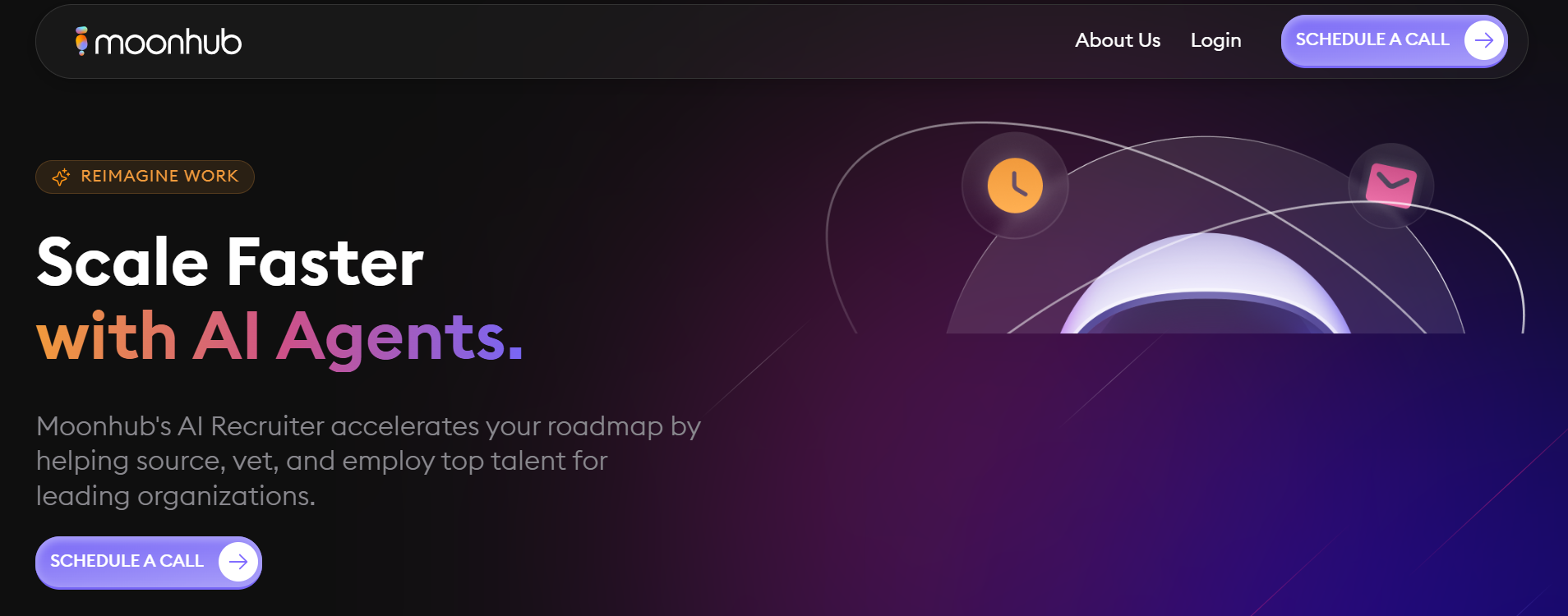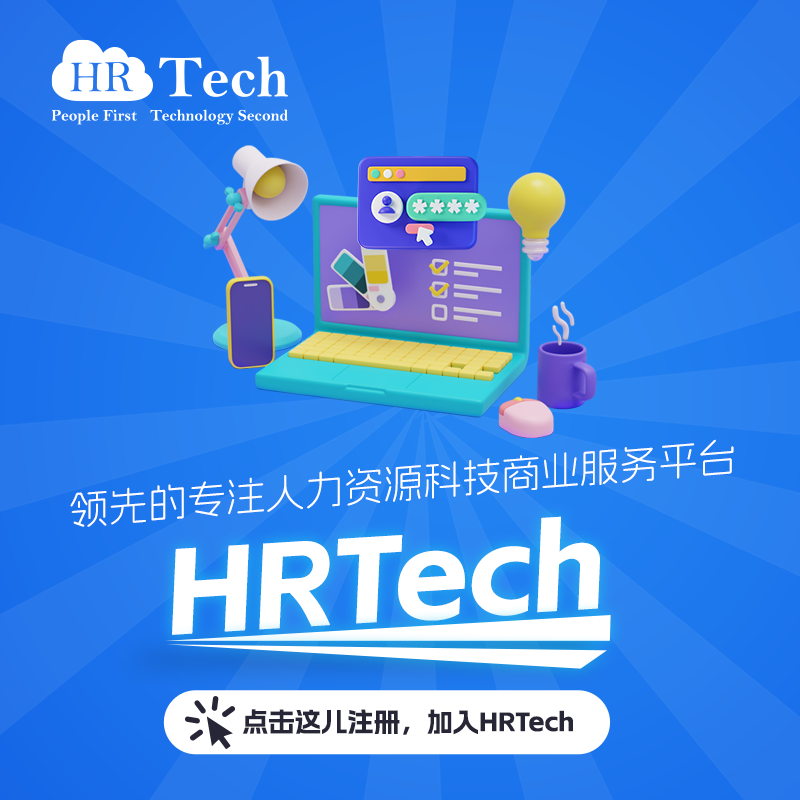-
 资讯
资讯
【法国】为中小企业定制人工智能应用平台Phacet获得400万欧元种子轮融资
为中小企业提供个性化人工智能解决方案的先锋企业 Phacet 宣布获得 400 万欧元的种子轮投资。参与本轮融资的投资基金包括 Motier Ventures、Aglaé Ventures、Emblem、Origins、Kima、Financière Saint James、Robin Capital 和 BetterAngle。
这家法国初创企业还获得了来自科技、金融、保险、数据和零售等领域的 148 位天使投资人的支持。投资者包括 Thibaud Elzière (Hexa)、Des Traynor (Intercom)、Florian Douetteau (Dataiku)、Philippe Corrot (Mirakl)、Rodolphe Ardant (Spendesk)、Damien Marc (JPB Système) 和 Guillaume Moubèche (Lempire)。
Phacet的使命是让人工智能变得易用、灵活,并为企业效率带来变革。它帮助企业建立个性化的人工智能解决方案,确保最大限度地发挥影响并无缝集成到日常运营中。
这家初创公司与客户合作,确定改善业务流程的基本应用。客户随后可以参加 Phacet 平台上的人工智能训练营,与人工智能工程师团队和客户团队共同打造人工智能应用。使用单一供应商的中央平台可确保企业获得一致的体验、数据连接和成本控制。
Phacet已经与Smartbox等欧洲公司合作,证明了其有效性,由于在电子商务和零售运营、财务和客户服务方面采用了定制的人工智能应用,该公司的运营发生了转变。到2025年,Phacet的目标是在电子商务/零售、工业、金融和服务等领域完成一系列即用型人工智能应用。
Phacet公司的创始人在人工智能领域的专业能力得到了认可,同时在建立和管理B2B平台方面也拥有丰富的经验。Phacet 创始人兼首席执行官尼古拉斯-马尔凯(Nicolas Marchais)说: “投资者的支持将使我们能够推进我们的使命,在快速发展的人工智能模型和中小企业的具体需求之间架起一座桥梁。这将使他们能够从整合人工智能的愿望转变为在不同部门的实施。
初创工作室 Hexa 创始人、知名投资人 Thibaud Elzière 补充说:"Phacet 不仅是一家人工智能公司,其创始团队在软件方面的经验也让他们明白,作为企业的合作伙伴,从头到尾支持企业转型非常重要。除了人工智能模型之外,他们还帮助确定优先影响领域,并为员工创建了理想的用户界面。”
Phacet 的人工智能应用旨在通过自动化重复性任务来提高人类能力,同时让员工专注于高附加值任务。我们支持团队将人工智能融入现有流程的核心,强调人与机器之间的互补关系。
-
 资讯
资讯
【法国】自由职业者福利初创公司Jump获得1100万欧元A轮融资,为年轻一代制定劳动力规范
作为劳动力市场的颠覆者,Jump公司刚刚宣布了一笔 1100 万欧元的 A 轮融资,由泛欧基金 Breega 领投,Index Ventures 和 RAISE Seed For Good 参投。继 2021 年首轮 400 万欧元的注资后,这笔资金将用于加快 Jump 在法国和欧洲的发展,尤其是推广其旨在为追求自由的年轻一代重新定义工作的创新模式。
法国有 400 多万自由职业者,年轻一代的梦想不仅仅是传统的职业,工作世界正在经历一场深刻的变革。重要数据显示,每两个 Z 世代的年轻人中就有一个不想要传统的长期合同。
这反映了新的需求:灵活和流动性,同时保持工作的安全性。由尼古拉斯-法永(Nicolas Fayon)、蒂博-库隆(Thibault Coulon)和马克西姆-布歇(Maxime Bouchet)构思和开发的解决方案 “跳一跳”(Jump),旨在将他们的职业生涯转变为真正实现自我价值的途径。这是数百万创业者的一个战略转折点:一个传统工作准则受到挑战的世界。
公司的使命是重新定义工作世界。Jump 公司拥有 2000 多家客户,为他们提供最好的社会保障(公司医疗保险、员工储蓄等),为他们提供可靠的工具基础和受薪工作的所有好处。如今,Jump 已成为自由职业者不可或缺的合作伙伴。
“今天,Jump 将年轻一代对自由的深切渴望与对安全和个人成就感的基本需求结合起来。自 2021 年推出以来,我们迅速赢得了自由职业者的青睐,成为法国的领军企业。这笔资金不仅能让我们加速发展,还能继续开发我们的产品,以满足法国和欧洲未来创造者的需求,"Jump 联合创始人兼首席执行官尼古拉斯-法永(Nicolas Fayon)评论道。
这笔巨额融资将使这家年轻的法国初创企业加速发展,并在法国和欧洲(包括英国)推广其创新模式。在当前形势下,由泛欧基金Breega牵头、Index Ventures和RAISE Seed For Good参与的法国和国际知名基金支持的这一特殊的A轮融资,将使Jump的团队能够在Y世代和Z世代(他们是改变工作习惯的核心)中提高品牌知名度,并为他们提供更全面的支持,帮助他们实现职业和个人目标。
“我希望成为一名自由职业者,而不必担心行政方面的问题,Jump 为我提供了理想的解决方案,客户服务团队为我提供了优质的支持,而且价格不再便宜,而是标准化的。事实上,Jump 重新定义了获得自由职业者独立性的标准,"Jumper 首席技术官 Lilian Saget-Lethias 补充道。
“Jump是对社会变化和我们与工作关系的期望的回应。独立不再意味着行政负担和社会保护的减少。凭借强大的产品、法律创新和人力三位一体的优势,尼古拉斯和他的团队正在重新洗牌行业,并创建一个新的自由职业者类别。选择自由职业是他们的选择,而非迫不得已,Jump 将与他们并肩作战,以简单、安心的方式迎接职业生涯的新篇章。Breega合伙人Benjamin Deplus表示:"Jump的愿景和价值观与Breega不谋而合,我们很荣幸能在下一阶段为Jump提供支持。
为了在 Y 世代和 Z 世代中推广其颠覆性解决方案,公司的目标是到 2025 年将员工人数翻一番。最近筹集的 1100 万欧元资金也将支持其强劲增长。
-
 资讯
资讯
【出海俱乐部】北京· 2024出海HR高端管理私享会10月25日在北京举办,名额有限,马上报名
随着越来越多中国企业拓展业务,加大了出海力度,对于不少企业在面对海外风云变幻的市场,首先遇到的就是人的问题,不过不少优秀的出海企业积极探索和尝试,总结出了适合自身发展的出海实践经验。HRTech出海俱乐部从2022年开始举办出海HR私享会,为出海企业和服务机构链接需求解决困惑,邀请优秀的企业和优秀的出海服务机构分享出海的人力资源管理实践经验。
10月25日北京,HRTech出海俱乐部举办2024出海HR高端私享会,为大家提供深度交流和学习的难得机会。
日程详情
活动详情
时间:10月25日(周五)14:00——16:30(当日全天同步举办人力资源科技年度论坛)
地点:北京 新世界酒店
规模:仅限30人,确保每位会员都能获得充分的交流机会。
报名:http://hrnext.cn/3jnWC4(扫描上方图片二维码或者复制链接在浏览器打开)
费用:980元/人,出海俱乐部会员免费
活动亮点
热门话题:深入探讨海外招聘、出海战略、跨文化管理、出海安全、国际合规性等关键议题。
专业分享:行业专家的深入见解和实战经验分享。
精英交流:与来自各行业出海企业的HR精英面对面交流。
会员专属:HRTech出海俱乐部会员参加,确保高质量互动。
活动话题方向
全球化人才招聘策略
跨文化团队建设与管理
出海员工安全
国际劳动法与合规性
全球薪酬福利体系设计
国际员工绩效管理
海外人才发展与培训
组织变革与国际人力资源战略
数字化HR工具与技术应用
企业社会责任与品牌国际化......等您现场来深入沟通,您也可带着出海的疑问专家为您解答
HRTech出海俱乐部咨询:联系我们:小科微信:hrtech-china邮件:hi@hrtechchina.com加入HRTech出海俱乐部
HRTech出海俱乐部全新升级2.0版本,您将获得以下十大专属权益:
高端活动参与权:优先参与各类高端私享会、论坛和研讨会。
资源链接:获取最新的国际人力资源管理资讯和资源。
咨询服务:直接向行业专家咨询,解决具体问题。
趋势分析:获取国际人力资源最新趋势分析。
跨文化交流:参与跨文化背景下的交流和学习。
人脉网络:构建与全球HR精英的联系,拓宽职业网络。
品牌提升:提升您和您企业在行业内的知名度和影响力。
新机会发现:发现全球人力资源工作的新机会。
会员社区:加入专属会员社区,与同行共享知识与经验。
定制服务:享受个性化的会员服务和支持。
目前近千家出海企业已加入,我们的会员包括:
世界500强企业,如携程、泰康保险集团、阿里巴巴、腾讯、华为等。
快速成长的创新企业,涵盖生物科技、汽车、科技、金融等多个领域。
HRTech出海俱乐部机构会员HRTech出海俱乐部同样欢迎出海服务机构加入HRTech出海俱乐部机构会员加入HRTech出海俱乐部,您将获得:
持续的品牌影响力
通过我们的平台,您的品牌将获得持续的曝光和增强的影响力。
精准链接出海企业
我们提供精准的对接服务,帮助您快速链接到有出海需求的企业。
全方位的品牌传播
利用我们的媒体资源,为您的品牌传播提供全方位的支持。
专业的品牌背书
加入我们,即意味着获得专业平台的背书,提升品牌信誉。
出海需求优先对接
作为会员,您将享有出海需求的优先对接权,抢占市场先机。
出海机构更多权益和机会,欢迎联系同时欢迎合作本场活动
奈斯 获取详细合作方案微信:HRTechnice邮件:nice@hrtechchina.com加入我们,共创未来!HRTech出海俱乐部不仅是一个社群,更是一个共创、共享、共赢的平台。我们诚邀您的加入,与行业内的领袖和专家一起,探索人力资源管理的无限可能,共创企业出海的美好未来。HRTech出海俱乐部介绍:HRTech出海俱乐部是中国领先企业出海人力资源信息服务平台,为出海企业提供一站式人力资源解决方案的信息指南;同时联合全球领先的人力资源服务机构,结合本地化资源和服务,为企业出海提供专业的人力资源信息服务,企业可以聚焦组织目标实现业务快速发展!HRTech出海俱乐部全新升级,定期举办线上线下会员专属高端私享会、需求服务对接、出海管理奖项评选、调研报告以及海外参访等活动。诚邀出海企业HR及出海服务机构加入。
-
 资讯
资讯
ADP重磅推出AI驱动HCM平台:Lyric HCM,赋能全球人力资源管理
刚刚,ADP宣布推出Lyric HCM,这是一个融合了生成式AI(GenAI)的全球化人力资本管理平台,旨在通过灵活性、智能化和以人为本的设计提升员工体验。Lyric HCM可以帮助企业应对全球员工管理的挑战,提供个性化的服务,并支持在75个以上国家的薪酬管理。Lyric还利用预测分析、实时洞察和异常检测,帮助企业做出更明智的决策并提升效率。
ADP全球产品与创新总裁Sreeni Kutam指出,现代企业需要具备适应性和合规管理能力的工具,而Lyric通过结合ADP庞大的数据集,提供灵活的解决方案,满足了企业不断变化的需求。同时,全球人力资源行业分析师Josh Bersin也强调,Lyric HCM超越了传统的人力资源管理系统,能够帮助员工更高效地完成工作并提升整体工作体验。
Lyric的云原生设计、强大的移动体验以及对GDPR等合规要求的支持,使其成为全球大型企业的理想选择。此外,Lyric可以灵活适应各种企业结构和工作流程,帮助企业无缝扩展并提供个性化的员工体验。
视频可以访问视频号:HRTech
ADP Lyric HCM利用生成式AI (GenAI) 提供个性化的全球员工体验
新泽西州罗塞尔,2024年9月23日 - ADP®今日宣布推出ADP Lyric HCM,一个专为满足现代化劳动力不断变化需求而设计的人力资本管理(HCM)平台,涵盖全球HR、薪酬和服务功能。Lyric通过结合灵活性、智能化和以人为本的设计,提供了一个革命性的解决方案,提升了全球范围内的员工体验。
"Lyric为现代工作场所设立了新标准,将先进的HR技术与高度个性化的方法结合在一起," ADP全球产品与创新总裁Sreeni Kutam表示。 "今天的劳动力是灵活且全球化的。企业需要工具来高效管理他们的全球员工,确保合规并具备洞察力。Lyric通过结合行业领先的生成式AI技术与ADP独有的大数据,提供了灵活、智能且以人为核心的HCM解决方案。"
在当今动态的商业环境中,大型企业需要能够快速适应变化的HCM系统。分散的技术往往妨碍HR部门对全球员工数据的全面掌握。随着法规不断变化,企业需要一种设计能够帮助他们主动管理合规的系统。此外,今天的技术娴熟员工期望个性化、实时的服务来解决问题并做出明智决策。
Lyric通过一个一体化的HCM解决方案应对这些挑战,其特点包括:
灵活性:能够轻松操作,适应企业独特的结构、工作流程和实践,无需遵循固定的方法。
智能性:通过预测分析、实时数据洞察、趋势预测、异常检测和个性化建议,提升决策能力并提高运营效率。
人性化:为员工提供个性化的、与其职业发展阶段相符合的体验。
全球性:ADP Lyric HCM支持75多个国家的工资发放,且每个季度会拓展更多地区。
大型企业可依赖Lyric的云原生设计及强大的安全机制,帮助其遵守严格的GDPR及其他合规要求。Lyric提供响应式网页及强大的移动端体验,使其无论何时何地都可以轻松访问,帮助企业扩大规模,管理全球员工并提供服务。
"当今的企业需要一种全新的、灵活易用且融合了AI技术的HR软件,"全球HR行业分析师Josh Bersin表示。 "ADP的Lyric HCM为动态企业量身打造,围绕团队而非层级结构,具备管理新型工作世界的能力。Lyric不仅仅是HR管理工具,还能够使员工的工作更加轻松高效。凭借其先进的智能技术、个性化设计和全球可扩展性,Lyric已成为解决当今HR挑战的首选工具。通过提升人性化体验,Lyric帮助企业有效管理其全球团队,提供适应各自需求的解决方案。"
"Lyric HCM让我们能够实现无缝扩展,"Capstone Logistics的执行副总裁Tom Peot表示。 "我们最近在有机增长和并购方面都有显著发展。Lyric帮助我们保持灵活性,并提升了以往无法实现的效率。"
欲了解更多关于Lyric功能的信息或安排演示,请访问 ADP.com/lyricHCM。
关于ADP (纳斯达克: ADP)
通过尖端产品、优质服务和卓越体验,ADP致力于设计更好的工作方式,帮助人们充分发挥潜力。涵盖HR、人才管理、时间管理、福利和薪酬。由数据驱动,以人为本。了解更多信息,请访问 ADP.com。
ADP,ADP徽标和Always Designing for People是ADP, Inc.的商标。其他所有标志均为其各自所有者的财产。
版权所有 © 2024 ADP, Inc. 保留所有权利。
-
 资讯
资讯
报告免费下载:《如何使用绩效管理来激励员工成长》,探索绩效管理的新维度
在当今竞争激烈的商业环境中,员工的成长与发展已成为推动企业成功的关键因素。但如何有效地将绩效管理与员工成长相结合,以激发团队的潜力并实现组织目标?答案就在我们最新的白皮书《如何使用绩效管理激发员工成长》中。
扫描上方图片二维码或复制链接 http://hrnext.cn/a9tWW1 到浏览器打开
立即下载,获取关键见解:
1、员工成长的驱动力:深入了解员工职业发展的核心需求。
2、绩效与成长的融合:探索如何将绩效管理转化为员工成长的动力。
3、实际案例分析:通过真实案例学习如何实施有效的成长策略。
4、实际案例分析:行动框架:提供实用的四步框架,帮助您构建支持员工成长的绩效管理体系。
为什么这份白皮书不容错过:
数据支持:基于最新的员工成长和绩效管理研究。
策略指导:提供具体的策略和行动计划,易于实施。
行业洞察:揭示顶尖组织如何通过员工成长提升绩效。
未来趋势:洞察未来工作场所的发展趋势,保持竞争优势。
别让员工的成长潜力等待!立即下载白皮书(复制链接http://hrnext.cn/a9tWW1到浏览器打开),开启您的组织和员工成长的新篇章。
如有问题联系:
小科微信号:hrtech-china邮箱:xiaoke@hrtechchina.com
-
 资讯
资讯
【印度】人工智能招聘平台Vahan.ai获得1000万美元B轮融资
总部位于印度班加罗尔的人工智能招聘平台 Vahan.ai 已在 B 轮融资中获得 1000 万美元。
本轮融资由 Khosla Ventures 领投,Y Combinator、Gaingels 和 Paytm 创始人 Vijay Shekhar Sharma 参投。最新一轮融资使公司迄今为止的累计融资额达到 1800 万美元,其中包括 2021 年和 2019 年分别筹集的 800 万美元和未公开的金额。
Khosla Ventures 成立于 2004 年,总部位于加利福尼亚州门洛帕克,是一家风险投资公司,为人工智能、可持续发展、企业、消费者、健康和前沿技术领域的创业者提供支持。
新资金将帮助 Vahan 扩展到制造业和零售业,同时增强其人工智能能力。
目前,Vahan 的 AI 招聘人员使用英语和印地语进行面试。不过,明年内,该平台将扩展到其他语言和各种方言,使其更具包容性。
公司的人工智能系统利用 Vahan.ai 招聘机构网络的数据进行微调,该网络生成了超过 10 万小时的通话录音。这些数据有助于训练人工智能系统识别和响应不同的地区口音和方言,这一特点使其有别于其他招聘技术。
关于 Vahan.ai
Vahan.ai成立于2016年,提供一个旨在简化蓝领工人招聘流程的平台,提供招聘、人员配置和薪资管理等服务。该平台目前以英语和印地语进行面试,并计划扩展到其他主要印度语言。Vahan.ai 已在 480 个城市为 Zomato、Swiggy、Flipkart、Zepto、Blinkit、亚马逊、Rapido 和 Uber 等大公司安排了 50 多万名工人。他们的目标是建立一个综合平台,不仅提供赚钱的机会,还提供蓝领专业人员茁壮成长所需的工具、福利和支持。
-
 资讯
资讯
【美国】技工培训提供商Interplay Learning获得一笔未披露金额的融资,并收购国际工业培训公司Industrial Training Internationa
Interplay Learning(Interplay)是一家领先的沉浸式技工培训提供商,公司宣布已获得高盛另类投资公司(Goldman Sachs Alternatives,以下简称 “高盛”)的融资,并收购了国际工业培训公司(Industrial Training International,以下简称 “ITI”),以扩大其在关键领域的业务范围。作为本轮投资的一部分,Interplay 将高盛董事总经理 Richard Waitumbi 加入其董事会。
通过收购 ITI,Interplay 将把部分增长投资用于拓展工业领域,从而进一步实现将业务拓展到长期面临劳动力短缺的各个行业的愿景。 ITI 成立于 1986 年,是数千家公司和政府机构长期信赖的顾问和解决方案提供商。ITI 为起重机和索具操作相关活动带来了更多身临其境的模拟培训解决方案,这是所有类型工作现场的共同需求。
Interplay 首席执行官 Doug Donovan 分享说:"Interplay 和 ITI 都有一个共同的使命,那就是为建造、维修和维护世界重要系统的工人创造更好的职业和生活。我们相信,每一位技术工人都应该拥有无限的社会流动性和学习经验。每个组织都应该对其技术工人队伍的准备情况、能力和价值驱动力充满信心。在我们的投资合作伙伴高盛另类投资公司(Goldman Sachs Alternatives)的支持下,我们可以携手加快实现这一愿景,并提供一个跨行业平台,在这些工人的整个职业生涯中为他们提供支持,并为依赖他们的公司带来积极的业务成果。
高盛另类投资公司(Goldman Sachs Alternatives)可持续投资部合伙人兼包容性增长战略主管格雷格-谢尔(Greg Shell)分享道:"我们的愿景是支持那些不仅坚持核心经济原则,而且服务于社会需求的企业,并以此证明这种投资方式也能带来丰厚的回报。我们相信,Interplay 正是这种投资理念的代表,我们的投资将帮助它完成成为该领域全球领导者的使命。全球企业在招聘和留住技术人才方面面临巨大挑战,而教育系统在满足这一需求方面进展缓慢。Interplay Learning 凭借其领先的人工智能和沉浸式技术,使企业能够掌控其贸易技能发展的命运,并帮助教育合作伙伴培养全球劳动力的下一代技术工人。
Interplay 正在应对威胁美国经济的最大挑战之一--熟练劳动力短缺。根据 Angi 的《2024 年技工报告》,70% 的受访技工表示,缺乏可用的劳动力阻碍了他们的发展。据美国劳工统计局估计,到 2029 年,将新增 150 万个技工岗位,但却没有足够的工人来填补这些岗位。住宅、商业、工业和基础设施建设行业都需要通过吸引年轻人才从事技工职业来替代即将退休的工人。
通过为企业提供创新的数字化工具,不仅可以提高现有人才的技能,还可以帮助企业吸引、培训和留住没有工作经验的人才,Interplay 正在引领解决技术工人短缺问题。Interplay 的沉浸式职业发展平台可提供 500 多个小时的课件,涵盖一系列技能行业,并利用人工智能和三维仿真技术提供与市场上任何产品都不同的智能技能发展计划。通过为企业提供可扩展的解决方案,让工人更快地做好就业准备并保持更长的工作时间,Interplay 为面临严峻劳动力挑战的行业带来了有影响力的成果。
除行业外,Interplay 还为教育机构提供帮助,利用 3D 仿真和虚拟现实技术为辅助学习项目提供动力。它还支持在没有独立技工学校的地方开办技工学校。毕业生可获得行业认可的证书,为他们打开通往经济回报丰厚且意义非凡的职业生涯的大门。
-
 资讯
资讯
【美国】AI招聘平台Mercor以2.5亿美元估值获得3000万美元A轮融资,利用AI创造就业机会
Mercor 宣布以 2.5 亿美元的估值获得 3000 万美元的 A 轮融资。本轮融资由Benchmark的Victor Lazarte和Bill Gurley领投,General Catalyst、Peter Thiel、Jack Dorsey、Adam D'Angelo、Larry Summers、Chris Re等参与了本轮融资。Benchmark 的 Victor Lazarte 将加入董事会,继续支持 Mercor 的成长和发展。
Mercor 是一个人工智能招聘平台,帮助顶级科技公司和领先的人工智能实验室招聘软件工程、法律、化学、金融和其他许多专业的专家。
“我们相信,每个求职者在申请工作时都应该有机会接受面试,"Mercor 的联合创始人兼首席执行官布兰登-弗迪(Brendan Foody)说。“目前的招聘流程是根据传统的简历信号而非人的能力来选择应聘者。人工智能可以做得更好。”
联合创始人布伦丹-弗迪(Brendan Foody)、阿达什-希尔马特(Adarsh Hiremath)和苏里亚-米达(Surya Midha)在湾区高中时因参加辩论赛而相识,在乔治城大学和哈佛大学读大学一年级时就开始酝酿创建公司。2023 年,他们退学并开始创建 Mercor 公司。今年早些时候,三位创始人都获得了泰尔奖学金。
自公司成立以来,他们的候选人数已超过 30 万,在全球范围内创造了数千个工作岗位。该团队使用人工智能模型来更好地评估求职者的技能组合,并预测他们在特定岗位上的表现能力。
为了庆祝他们最近取得的进展和宣布的融资,Mercor 将为所有人提供免费的简历和面试反馈,这对求职者来说是一项传统上无法获得或昂贵的资源。
-
 资讯
资讯
【德国】人力资源科技初创公司Become.1获得330万欧元种子轮融资
Become.1 是一家总部位于德国海德堡的人力资源科技初创公司,获得了 330 万欧元的种子轮融资。
本轮融资由 D11Z.Ventures、Haufe Group Ventures、MBG Baden-Württemberg、High-Tech Gründerfonds (HTGF) 以及 Matthias Allmendinger(Taxdoo)、Sebastian Koch(前毕马威会计师事务所)和 Maru Winnacker(Urania Ventures)等天使投资人领投。HTGF 和其他天使投资人已经参与了 2022 年的种子轮融资,其中包括 Thomas Otter(Acadian Ventures)和 Michal Jarocki(前德国商业银行)等投资者。
公司打算利用这笔资金进一步扩大其员工福利一体化平台。
Become.1 是一家人力资源技术初创公司,由联合创始人兼首席执行官 Friedrich Villhauer 和 David Wambsganss 领导,旨在通过其软件减少雇主的管理工作量,为员工提供最大的灵活性,使员工福利更容易获得和使用。这些福利可以安全地进行管理,并集成到现有的人力资源管理(HRM)和薪资系统中。该平台面向德国公司,但也为其他欧洲国家的员工提供解决方案,包括奥地利、瑞士、荷兰、西班牙、英国和卢森堡。
公司目标是提供全方位的员工福利解决方案,消除税务法规的复杂性,满足员工的不同需求。我们的目标是改善工作体验,提高团队生产力,提升整体生活满意度。我们为各种规模的组织提供量身定制的工具,旨在树立员工福利的新标准。
公司目前有近 30 名员工,已经赢得了数百家中小企业和初创公司的客户,其中包括 Hypoport、Stadler Rail、Knuspr、Diconium 和 Eurofins Genomics。
-
 资讯
资讯
【必读】Workday Ventures最新的10项AI投资,推动了Workday客户和行业的创新
帮助企业管理员工和资金的领先解决方案提供商 Workday 公司(纳斯达克股票代码:WDAY)宣布,Workday 公司的战略资本部门 Workday Ventures 将继续推动人工智能的发展。自2023年初以来,Workday Ventures已经进行了10项新的人工智能投资,这是其专注于人工智能创新的一部分,帮助企业永远向前发展。
“Workday公司企业发展高级副总裁Michael Magaro表示:"我们面临着令人难以置信的机遇,包括Workday Ventures可以通过多种方式帮助加速最新的人工智能创新,并将其与Workday不断增长的客户、合作伙伴和员工生态系统联系起来。“通过与有远见的人工智能公司合作,我们正在投资于有助于推动我们的客户和行业发展的最新技术。
用人工智能加速工作的未来。Workday Ventures 对提供最新人工智能技术的企业进行投资,以提高生产力,改善业务决策,支持不断变化的劳动力需求,包括寻找、保留和发展人才。最近的投资包括以下几家公司:
Censia 是一个人才智能平台,为员工和人力资源团队提供人工智能技能数据和洞察力,所有这些都在 Workday 等系统中实现。此次投资彰显了 Censia 的创新能力,并将其定位为通过负责任的人工智能革新人才管理的领先企业。
Glean,与公司所有数据相连的工作人工智能平台,使每个人都能在工作中利用人工智能查找知识、生成内容并自动执行任务。
Nayya 是一个福利智能平台,让员工能够选择和参与他们的福利。通过人工智能和数据分析的力量,Nayya 提供个性化的福利体验,简化了福利选择和全年使用的复杂性。有了这笔投资,Nayya 将继续推进其简化福利选择流程的使命,确保员工获得做出明智决策所需的工具和洞察力。
Sana,一家改变组织共享和获取知识方式的人工智能公司。
TechWolf,一家以人工智能为基础的技能基础设施公司,为企业提供数据,以识别和发展员工的技能。
Uplimit,一家人工智能驱动的在线学习平台,彻底改变了教育创建和交付方式。
利用人工智能简化业务流程。Workday Ventures 正在投资帮助客户简化和精简业务流程的解决方案,以帮助企业更快、更有效地发展。最近的投资包括:
Benepass 是一个灵活的福利平台,可将税前和税后支出账户整合到一张 Visa 卡上。
Oro Labs,采购协调、接收管理和供应商入职平台。
Tesorio,人工智能驱动的互联财务运营平台,汇聚全公司数据,推动可操作的洞察力和端到端自动化,加强现金流管理、订单到现金和协作,以推动资本高效的业务增长。
Vanta 是一个信任管理平台,帮助企业实现安全与合规流程自动化。
Workday Ventures 的投资组合公司正在扩大客户获取新技术的途径,这是 Built on Workday 计划的一部分,该计划使客户能够通过 Workday Marketplace 构建、管理和向客户销售应用程序。几家 Workday Ventures 公司还加入了 Workday AI Marketplace,该市场要求 AI 解决方案证明遵守了 Workday 负责任 AI 治理框架(Workday Responsible AI Governance Framework)。
关于 Workday
Workday 是一个领先的企业平台,帮助企业管理其最重要的资产--人员和资金。Workday 平台以人工智能为核心,帮助客户提升员工的能力,为工作增添动力,并推动业务永远向前发展。全球各行各业的 10,500 多家企业都在使用 Workday,其中既有中型企业,也有超过 60% 的财富 500 强企业。
 扫一扫 加微信
hrtechchina
扫一扫 加微信
hrtechchina
 资讯
资讯
 资讯
资讯
 资讯
资讯
 资讯
资讯
 资讯
资讯
 资讯
资讯
 资讯
资讯
 资讯
资讯
 资讯
资讯





 扫一扫 加微信
hrtechchina
扫一扫 加微信
hrtechchina




